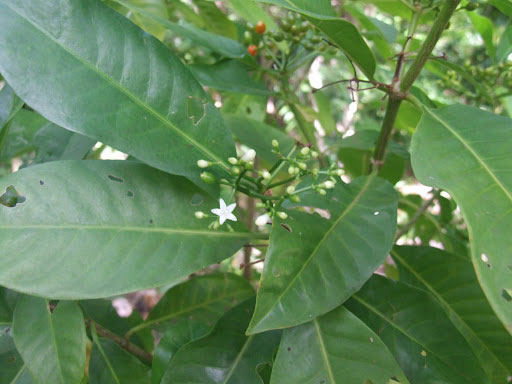Researchers indicate that the leaves of the matalafi plant may be used to treat cancer, diabetes, cardiovascular diseases, and even Covid-19.
The leaves of a plant “that can be found around the yards throughout Samoa” have shown effectiveness similar to ibuprofen in reducing inflammation and could even be used to treat conditions such as Parkinson’s disease and cancer, according to findings in a new study reported by The Guardian on November 4.
For centuries, the leaves of the Psychotria insularum – locally known as matalafi in Samoa – have been utilized in traditional medicine to treat inflammation related to fever, body aches, swelling, elephantiasis, and respiratory diseases.

Psychotria insularum, also known as matalafi.
Seeseei Molimau-Samasoni, the author of the new study and manager of the plant and post-harvest technology department at the Samoa Scientific Research Organization, stated: “When conducting the research, I was initially skeptical.”
“There are many superstitions surrounding this plant, especially in traditional medicine, but I was eager to explore whether we could find scientific value in the traditional medicines of Samoa,” said Molimau-Samasoni.
“Now we can affirm not only the potential of this plant as an anti-inflammatory agent but also its potential in cancer treatment, neurodegenerative diseases, diabetes, cardiovascular diseases, as well as Covid-19,” the expert noted.
Findings by Ms. Molimau-Samasoni and her colleagues have been peer-reviewed and will be published in a special issue of the Proceedings of the National Academy of Sciences of the United States.
“The leaves of the matalafi are usually chopped and squeezed to extract the juice. Traditional healers use that juice as a drink for patients. Sometimes they also use the leaves to rub on the patient or apply them to wounds that need healing,” Ms. Molimau-Samasoni explained, adding that her family has a tradition of practicing traditional medicine.
“I grew up with my grandmother, who was a traditional healer,” Molimau-Samasoni recounted. “When she passed away, she passed her healing methods down to me, so I also have the ability to heal using traditional methods.”
Molimau-Samasoni also acknowledged that there is a lot of skepticism and hesitation regarding traditional medicine.
“The challenge between modern medicine and traditional medicine is that people tend to focus on one type of treatment before seeking the other. As a result, some individuals turn to traditional healers for cancer treatments but then go to the hospital when the disease reaches stage four, which is too late for modern medicine to do anything,” Ms. Molimau-Samasoni said.
“And I also know many people believe that traditional medicine is just about mixing leaves together to create a placebo effect, but you need to remember that traditional medicine has made significant contributions to modern pharmaceuticals, such as aspirin,” she added.
Regarding matalafi, Ms. Molimau-Samasoni mentioned that it may take many years before this medicine is officially used, but she believes this is just the beginning, not only for matalafi but also for broader research on how traditional medicines from Samoa can be utilized today.


















































